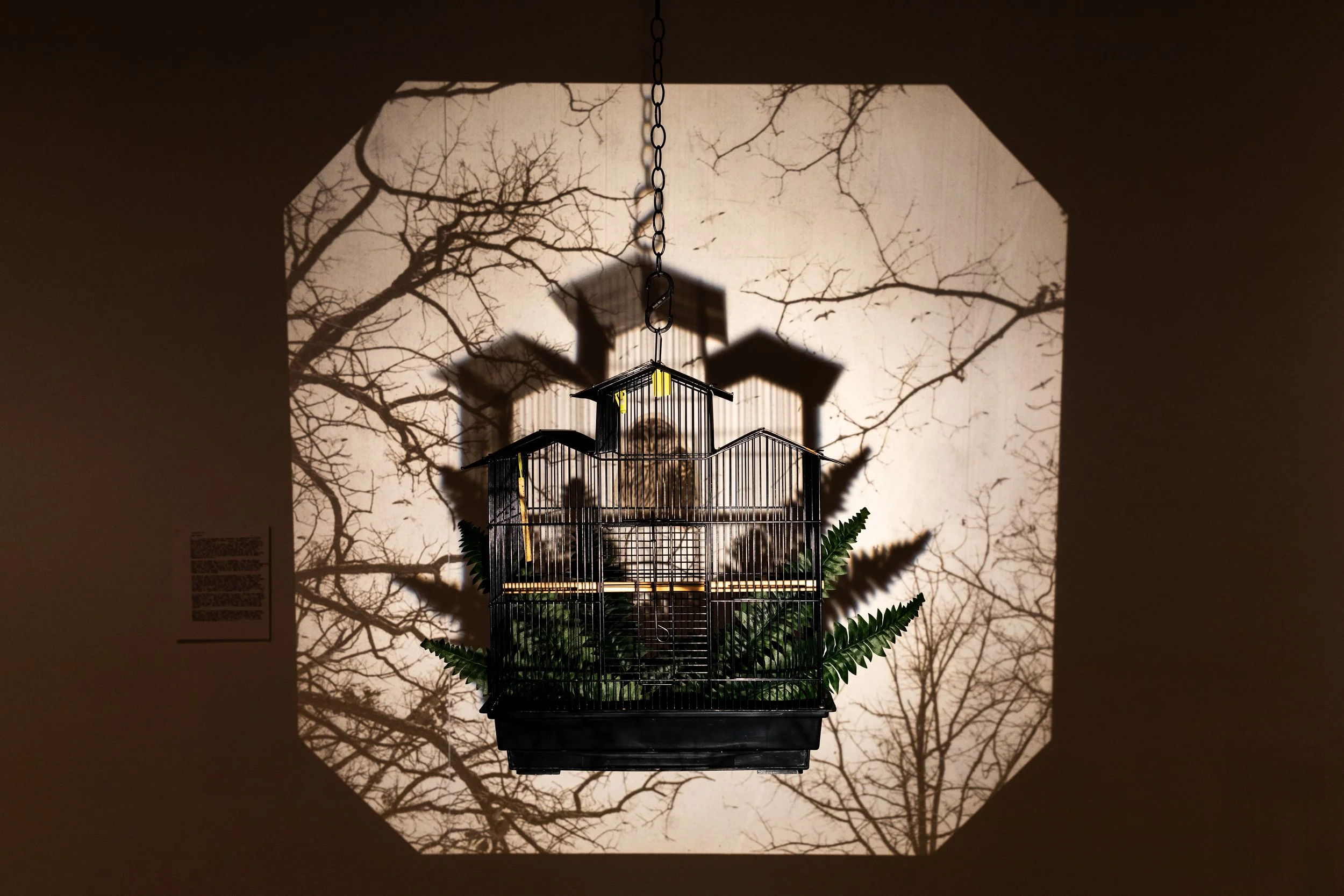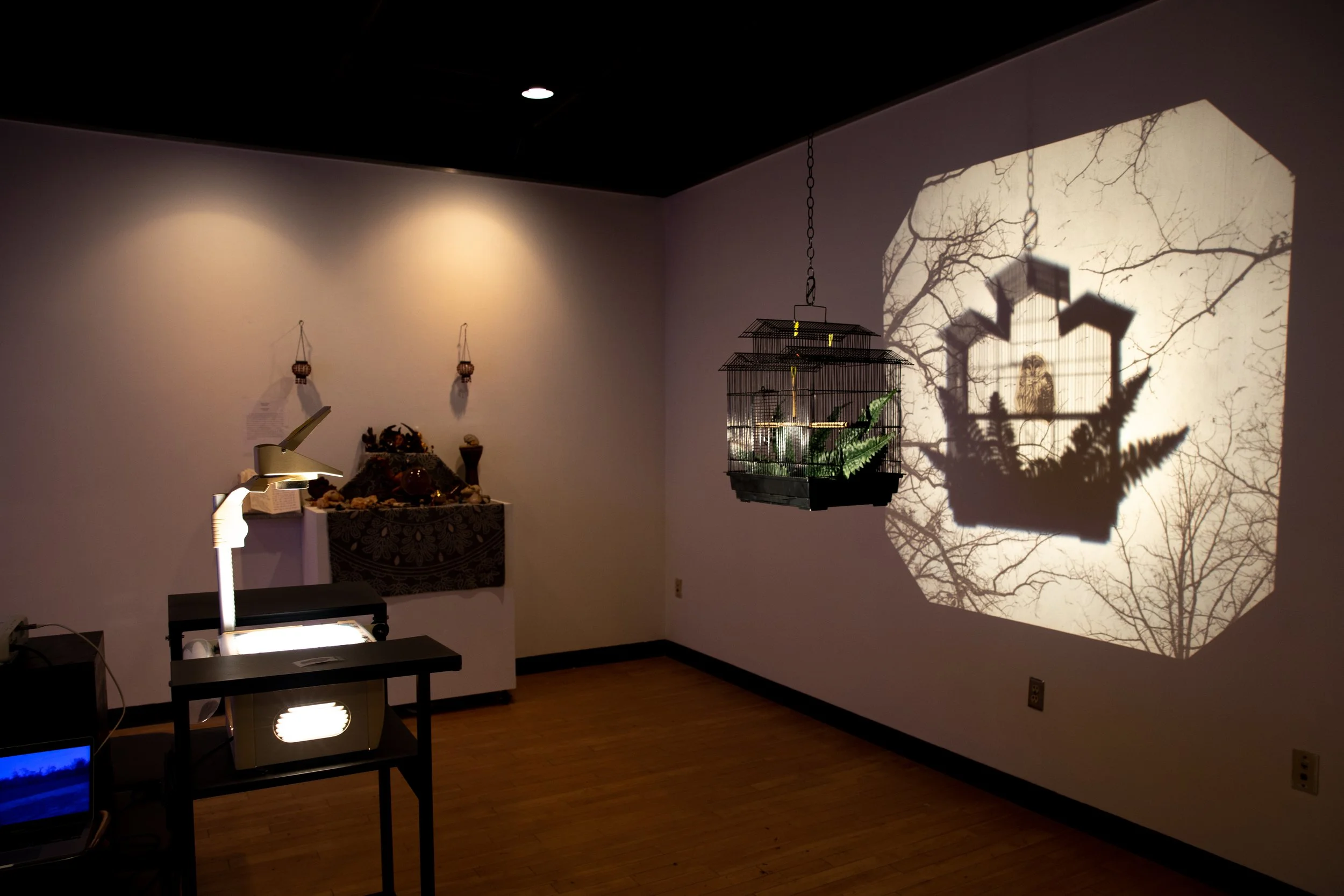Victorian Bird Iconography
This installation, Untitled no. 1, was created for the Making Kin exhibition at Southern Illinois University. Making Kin was developed to raise discussions about human-animal and animal-animal relationships as well as topics such as culture reduced to spectacle.
Untitled no. 1
Leah Sutton
The use of bird iconography has been used for centuries to convey different meanings some of which include sexuality, gender, and economic status. The themes of 17th-century Dutch paintings of bird cages would go on to create one of the most well-known icons in art of the time and later be adopted by the French and the English. The use of birds in fine art in the 17th, 18th, and 19th centuries shows a direct connection to the obsession that Victorians had with natural history and the materialization of nature. In addition, the use of bird iconography was often used to symbolize gender roles and the belief that a woman’s virtue was of utmost importance in society.
When birds in cages are typically depicted, they are usually shown in a domestic space with a young girl or an older woman in proximity. By showing the caged bird, the artist symbolizes the safety of a woman staying in a domestic space. There are also cases in which dead or wounded birds are depicted to show the dangers of being outside of the birdcage as an analogy for a woman losing her virtue.
The idea of the Victorians’ materializing nature comes from the history of enclosing live or deceased plants and animals in curiosity cabinets, Wardian cases, birdcages, etc. Over the years, birdcages and Wardian cases have evolved into the shapes of houses and greenhouses in a way to further convey this idea of domesticating and possessing the natural world. In addition, the materialization of plants can be seen in the invention of preserved or faux plants to have a domesticated form of nature that does not even have to be watered or kept alive.
To bring up discussions of nature and gender through the materialization of both nature and sex, Untitled no. 1 combines photographic projection and traditional sculpture to create an optical illusion of a bird within a house-shaped birdcage. By using an overhead projector, the viewer thinks that the bird should be in the cage based on the shadow on the wall, but in looking at the cage itself, realizes that it is empty apart from the faux plants.
The question of the bird’s physicality in the cage is a representation of gender roles today. Sexist remarks and domestic violence often go unnoticed now, like a shadow of previous years. Many people believe that gender equality is a battle that has already been won years ago, when, it is our blind sightedness that keeps it in our society.





